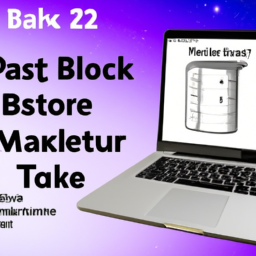Secure Your Digital Assets: Master the 3-2-1 Backup Strategy
In an increasingly digital world, the need to securely store and backup important data like photos, videos and documents is more critical than ever. With the proliferation of cloud computing services such as iCloud, Google Photos and Amazon Photos, it has never been easier to store large amounts of data securely in the cloud. However, these services are not without their drawbacks - they can be expensive and lack features such as facial recognition for quickly locating photos of family members. As a result, many people have begun creating their own personal backup systems for protecting their valuable digital assets.

Creating a personal backup system begins with understanding the basics of what is known as the “3-2-1” strategy. This involves having three copies of your data stored across two different media types (such as hard drives or USBs) with one copy kept offsite or in a different location such as at a relative’s house or in a safe deposit box. This ensures that you will still have access to your data even if one drive fails or is lost/stolen/destroyed due to natural disasters or other unforeseen events.
When selecting storage media for your 3-2-1 backups it’s important to choose reliable options that won’t fail you when you need them most. Solid State Drives (SSDs) are typically considered more reliable than Hard Disk Drives (HDDs), but cost more per GB on average so may not be ideal if you have large amounts of data to store. Additionally, some external HDDs offer “raid” configurations which can increase reliability by mirroring your files across multiple drives inside the same enclosure - making them great for those who don’t want multiple physical devices taking up space around their homes/offices but still want solid redundancy protection in case something goes wrong with one drive inside the enclosure itself.
Once you have chosen which type(s) of storage device(s) best suit your needs it’s time to start thinking about how you will actually organize all this data so that it remains accessible over time without becoming too cumbersome manage manually? Fortunately there are several open source programs available today designed specifically for managing photo libraries including DigiKam and Photoprism which offer features like facial recognition and geo tagging capabilities making finding specific images much easier than relying solely on traditional file system search tools like Windows Explorer or MacOS Finder (which were designed decades ago when hard drive capacities were measured in MB rather than GB). Additionally these programs often include automated backup features allowing users set rules regarding how often files should be backed up whether locally on an internal HDD/SSD or remotely via FTP over the internet etc.. Ideally users should also periodically verify that all backups completed successfully by comparing file sizes & checksums between original images & backups - this will help ensure no changes occur during transit from source > destination thus preserving both file integrity & ease future retrieval efforts if needed down line! Last but not least users should also be sure to regularly test their backups by restoring them on a different machine in order to ensure that everything works as expected in case of emergency.
Disclaimer: Don’t take anything on this website seriously. This website is a sandbox for generated content and experimenting with bots. Content may contain errors and untruths.
Author Eliza Ng
LastMod 2023-03-16